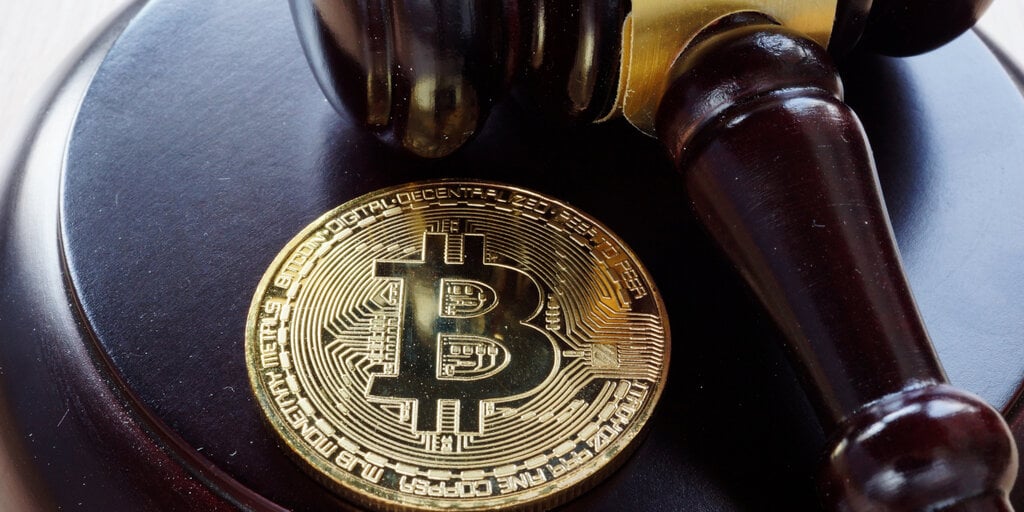Bitcoin, the first cryptocurrency created, has amazed the entire world with its extreme price movements since its inception in 2009.
Bitcoin has shattered all expectations and reached valuations that have captivated the financial world and it’s getting harder and harder to ignore.
To date, the historic date for BTC all-time high of approximately $73,000 remains March 13, 2024.
Bitcoin’s history is not just about numbers, but it represents the growth in the acceptance of cryptocurrency as finally being a legitimate part of the global finance.
In this article we will look the key factors and the market dynamics that pushed Bitcoin to the highest price, understanding when, and what these pivotal moments mean for the future of Bitcoin.
How Much Was Bitcoin When It First Came Out?
Bitcoin was born in the middle of financial turmoil after the global economic crisis of 2008. When Bitcoin first came out it had no official market value, and here’s why!
Bitcoin’s history is a journey that began in the shadows of the internet by an anonymous persona or group known as Satoshi Nakamoto and was created as a solution to the centralization of the financial system and the inefficiencies of traditional currencies, which had shown its huge gaps in the crash of 2008.
The first block, known as the “Genesis Block,” was mined on January 3, 2009, but at this point, Bitcoin was more of a novelty rather than a valuable asset.
It proposed a new kind of digital currency, uncontrolled by any central authority, offering a peer-to-peer financial network that operated on blockchain technology.
This new form of digital money is backed by the concept of decentralization and powered by electricity through a process called mining.
Mining, in its very basic definition, is the process of solving complex mathematical problems to validate transactions on the blockchain, utilized to secure the integrity of the Bitcoin network. When Bitcoin first came out, this process had both a low difficulty and minimal competition, that could have been done by almost anyone with a computer.
In those early days, Bitcoin wasn’t traded on any exchange, so it didn’t have a price in the traditional sense.
Bitcoin was more about the idea behind it: a financial system that is decentralized and could operate independently of traditional banks and governments, to solve issues related to inflation and offering an alternative to all the flaws in the traditional financial system.
It wasn’t until later that Bitcoin began to be traded and gained value. The value of Bitcoin is something that people attribute to it.
Price of Bitcoin in 2009: The Genesis
In 2009, Bitcoin had no recognized price because it wasn’t traded on any platforms.
Valuation for Bitcoin at that time would have been purely theoretical, considering the few early adopters who were passing it among themselves more as a form of fun or proof of concept.
Price of Bitcoin in 2010: The Start of Trading
The first known purchase using Bitcoin occurred on May 22, 2010, when a programmer named Laszlo Hanyecz paid for two pizzas with 10,000 BTC, a day now so-called “Bitcoin Pizza Day.” At that time, one Bitcoin was about $0.0008, making the transaction worth roughly $41.
This event is remembered to as the first time Bitcoin gained a tangible value.
Also, this period saw the creation of first Bitcoin exchanges like BitcoinMarket, launched in March 2010, which allowed trading of BTC against fiat.
Also the now-defunct Mt. Gox, founded in July of 2010 by Jed McCaleb. Mt. Gox was a website build to trade Magic: The Gathering game cards and later converted intro a Bitcoin exchange.
Having a place where one could buy or sell Bitcoin allowed its price to start appreciating.
By the end of 2010, the Bitcoin price was about $0.30, showing interest from early adopters.

Price of Bitcoin in 2011: The First Rally and Crash
2011 was the very firs year in which Bitcoin’s price jumped, with BTC hitting $1 in February 2011.
Due to positive media attention, curious early adopters, drawn in by the possibilities of a currency free of government control, started to buy Bitcoin, pushing the price even higher.
By June 2011, Bitcoin peaked at about $31. Shortly thereafter, BTC price it then crashed back to around $2 before the year ended. This crash was triggered by one of the first major hack of the Mt. Gox exchange, that eroded investors trust, and all, or most, confidence seemed lost.
At that time, Mt. Gox was handling about 70% of all Bitcoin transactions, showing the importance how a hack of a dominant crypto exchange could have on the market.
The demand of crypto exchanges was huge. Bitstamp, founded in 2011, became a reliable alternative to Mt. Gox, providing a far more stable platform to trade Bitcoin.
Bitstamp’s entry into the market provided users with options, contributing to the diversification.
In 2011, other cryptocurrencies started to appear, such as Litecoin, created by former Google engineer Charlie Lee.
Litecoin was meant to complement Bitcoin, offering faster transaction times and a different hashing protocol, making it one of the earliest and most enduring altcoins.
By the end of 2011, the total market cap had reached about $10 million.

Price of Bitcoin in 2012: Stability and The First Halving
Building on the volatility of 2011, Bitcoin’s price remained relatively stable throughout 2012, mainly falling between a lower of $4 and an upper of $13.
The first Bitcoin Halving was on November 28, 2012, a programmed reduction in the reward for successfully mining new blocks of Bitcoin, from 50 BTC to half that at 25 BTC, ultimately resulting in fewer Bitcoin being created each day.
The notion of a decreasing supply of new Bitcoin coming into the market started to intrigue many, in particular those who saw Bitcoin as an inflation hedge and perhaps even as a store of value.
During this year, more cryptocurrency exchanges were established, making it easier for everyone to start investing. Soon, the total crypto market cap reached about $100 million.
With the launch of Coinbase on June 20, 2012, it came to be one of the most user-friendly and eventually highly popular websites to buy and sell Bitcoin, based in the United States.
The easiness of use and the attention to regulatory compliance placed Coinbase as a strong foothold in the market, appealing to new users and experienced users alike.

Price of Bitcoin in 2013: The First Major Bull Run
At the start of the year, Bitcoin was trading at around $13 and was still not well known, but throught the year it spiked over $1,000 by November.
One of the major events in 2013 was the banking crisis in Cyprus, where many people looked for alternatives to traditional banking systems. It may have indirectly influenced Bitcoin price to rise from $32 to $90 by the end of March.
The upward momentum continued, and by April, Bitcoin hit an all-time high for the first time of $234.
The blast was in November 2013, when Bitcoin’s price spiked from $194 at the beginning of the month to a all time high of $1,100 by the end.
Governments, especially China, took note of this rapid ascent. In December, China banned banks from handling Bitcoin transactions.
The People’s Bank of China (PBOC) ordered all domestic lenders to close the accounts of Chinese Bitcoin exchanges by April 15, 2014 further contributing to the price volatility.
This caused the price to drop with Bitcoin falling to around $500 before the end of 2013, mainly due regulatory fears and Silk Road being closed down, a dark web markets that accepted Bitcoin as fees in some degree.
This year saw growth in the total crypto market cap to approximately $1 billion in the first half of the year and eventually ballooning to $13 billion by the end of 2013.

Price of Bitcoin in 2014: Volatility and the Mt. Gox Collapse
2014 was a bear year for Bitcoin, as it dips from his all time high of $1000 to closing the year of 2014 at almost $300.
After starting the year strong at around $1,000 in early January, Bitcoin was down to $111, a dramatic 90% drop from its earlier highs.
This sharp decline was driven by the dramatic collapse of Mt. Gox, one of the largest Bitcoin exchanges at the time.
In February, Mt. Gox temporarily suspended its withdrawal facility for what it claimed were technical issues, but it soon became clear that the crypto exchange had actually lost 750,000 BTC through hacking.
Despite the uncertainty, Bitcoin’s price showed resilience. Only five days after reaching its low, Bitcoin bounced back to $593.10.
By the end of the year, Bitcoin price had move down to just above $300, sowing continued uncertainty and how the wider market responded to the Mt. Gox disaster that finally brought its bankruptcy.
With more and more new cryptocurrencies coming into play the crypto market cap was around $5 billion. The market was relatively small, and Bitcoin was still the dominant player.

Price of Bitcoin in 2015: The Road to Recovery
Bitcoin had begun 2015 at about $300 per coin, still feeling the damage of the Mt. Gox collapse.
Early in the year, Bitcoin encountered a new challenge. On January 4, Bitstamp, one of the most trusted Bitcoin exchanges at the time, was hacked, resulting in the loss of 19,000 BTC, worth over $5.1 million. This caused the price of Bitcoin to drop to a low of $177 per coin.
Despite such a bad start to the year, throughout 2015, the price of Bitcoin gradually strengthened and stabilized, fluctuating between $200 and $500.
On July 30, 2015 Ethereum was first launched. Ethereum brought smart contract functionality to the blockchain, giving people an ability to create decentralized applications (dApps) and create new cryptocurrency coins.
Although Ethereum posed a challenge to Bitcoin’s dominance, Bitcoin still had about 90% market dominance and started to be viewed as the gold standard of the crypto industry.
The total crypto market cap was around $7 billion in 2015.
Serious institutional interest in Bitcoin and blockchain technology started to arise. For example, Barclays explored Ethereum-based platforms designed for banking use cases, while the Winklevoss twins themselves applied with the NYDFS for their Gemini Bitcoin exchange.
All this pointed toward an increasing level of adoption and acceptance on the part of mainstream institutions of cryptocurrencies in general.
Notwithstanding, regulatory news was generally positive throughout 2015, including a Russian court overturning a ban against access to Bitcoin related websites.
In September 2015, for the first time, the U.S. Commodities Futures Trading Commission (CFTC) classified Bitcoin as a commodity, which had wide ramifications concerning its regulation in the United States.
Meanwhile, in October, the European Union decided not to apply the VAT to cryptocurrency transactions and, in practice, it recognized Bitcoin as a currency within the union.
On the technical side, there was ongoing debates within the community as to how exactly to solve the scalability problems of Bitcoin.
The Lightning Network was proposed in 2015 as a potential solution to scaling issues, promising faster transactions.
While innovations such as the Lightning Network made transactions much quicker, Gavin Andresen and Mike Hearn wanted to raise the limit on block size to 20 MB. This debate, later christened the Blocksize Wars, reflected how hard it was to adapt Bitcoin to an exponentially growing user base.
The year ended on a positive vibe, Bitcoin price had recovered to around $430, signaling a slow but sure recovery.

Price of Bitcoin in 2016: The Second Halving
Starting the year at around $430, Bitcoin price showed some stability throughout the summer months, fluctuating between $350 and $700.
By the end of the year, Bitcoin’s price surged to $966 and set the stage for the bull run from 2017.
An important event in 2016 was the second halving of Bitcoin, which happened on July 9. This halving reduced the reward for miners from 25 BTC to 12.5 BTC. Thus, it reduced the speed at which new Bitcoins were being introduces into circulation.
This events led to a future supply shortage, which supported the price peak of Bitcoin into the end of 2016.
However, 2016 was not without problems. In August, the crypto exchange Bitfinex suffered a much larger hack, resulting in the theft of nearly 120,000 BTC, which amounted to a market value of roughly $72 million in that time.
The Winklevoss twins, founders of the Gemini exchange, attempted again to push forward with a proposal to launch the first Bitcoin ETF.
On the technical side, 2016 saw the emergence of Segregated Witness (SegWit), a proposed upgrade to the Bitcoin protocol created to improve scalability and efficiency transaction designed to scale Bitcoin more successufully.
For the entire year of 2016, Bitcoin maintained relatively high dominance in the overall cryptocurrency markets. Bitcoin’s dominance was 91.58% on January 1st, 2016.
With the emergence of Ethereum and other altcoins, Bitcoin’s market dominance dropped by over 15% to as low as 76% during the course of the year, but managed to recover to approximately 85% by year-end.
The total crypto currency cap for the year was about $15 Billion.

Price of Bitcoin in 2017: Bitcoin’s All-Time High to $20K
Starting the year at around $960, Bitcoin’s price exploded across the year, ultimately hitting an all-time high of $19,783 in mid-December. This was a historic event for Bitcoin, just after 17 months following the second halving, the price of Bitcoin had increased by 2,861%.
2017 various cryptocurrencies and blockchain projects appeared and attracted capital by issuing their own proprietary tokens.
The total market capitalization surged strongly, reaching 600 billion dollars at the end of the year.
Many investors, looking for alternatives to Bitcoin, invested money into these projects. In the process, Bitcoin’s dominance had fallen from 87% at the beginning of the year to about 37% by June. Despite this, Bitcoin stil remained the centerpiece of the crypto ecosystem.
Growing popularity brought more attention to scalability problems developing in Bitcoin, with rising transaction fees and delays that were a concern for the community for quite a while.
In order to take care of these issues, the SegWit upgrade was implemented on August 1, 2017, but not without some controversy.
The debates within the community about how to scale Bitcoin effectively, culminated and a new cryptocurrency, Bitcoin Cash (BCH), was the result of the hard fork that happened in the same date, dividing the community but offering a faster alternative the Bitcoin.
Despite facing some regulatory setbacks, like China’s ban on ICOs and the shutdown of its local Bitcoin exchanges in September, the market quickly bounced back in no time. Bitcoin’s price drop from $5,000 to $3,600 following the crackdown but made its way back to $5,000 by October.
Events that happened in 2017 include the introduction of Bitcoin futures launched by Chicago Mercantile Exchange (CME) and Chicago Board Options Exchange (Cboe) in December, which allowed for the entry of institutional investors into the crypto market and to take part speculating on Bitcoin’s price.
The influx of capital that followed pushed Bitcoin to nearly $20,000 by mid-December and Bitcoin was capturing global attention like never before.
However, Bitcoin’s rapid ascent was followed by a sharp correction. Concerns about its volatility saw its price drop below $14,000 before the end of the year.

Price of Bitcoin in 2018: The Post-All-time High Crash
2018 was a tough year for Bitcoin after the all-time highs of 2017. It started off at $14,000, and quickly began to lose value as initial investors who had bought in at the peak began to take profits, and the market saw a sharp downturn.
By February, Bitcoin’s price had dropped to $6,000, pressured by increased regulations from South Korea and China, which were cracking down on crypto trading and initial coin offerings (ICOs).
In March 2018, the U.S. Securities and Exchange Commission (SEC) announced its intention to impose stricter regulations on cryptocurrency exchanges
As the year went on, ICOs that had led the growth of altcoins in 2017, began to collapse. Most of those projects failed to sustaining their promises, leading to an overall market decline.
As altcoins started losing value, the Bitcoin dominance began to grow again. It climbed back to over 50% by mid 2018.
The price of Bitcoin continued decrease further hitting a low of $3,200 in December 2018.
After the crash, the market cap fell massevely to around $130 billion by the end of 2018, reflecting the sharp correction in the prices of Bitcoin and other cryptocurrency.

Price of Bitcoin in 2019: From Lows to New Highs
After the crash of 2018, Bitcoin started 2019 on a more optimistic note, trading around $3,700. By April, Bitcoin’s price had climbed to $5,000, as investors interest recovered.
In June Facebook announced Libra project, pushing Bitcoin’s price to over $10,000.
However, as always, regulatory scrutiny from U.S. and European authorities led to some volatility.
Bitcoin’s price remained relatively strong, ending the year at around $7,200.
The total crypto market cap rebounded to $190 billion, with Bitcoin dominance remaining between 60% and 70%.

Price of Bitcoin in 2020: Halving, COVID, and a New All-Time High
Bitcoin started off the year 2020 relatively stable at around $7,195 and by mid-February, broke the $10,000 resistance barrier.
However, this rise was short-lived as “Black Thursday” hit on March 12, when the World Health Organization officially declared the COVID-19 pandemic. A wave of panic crossed all the markets, and Bitcoin along with Ethereum, fell 50% in one single day.
Bitcoin was since a very long time $4,000.
In April, as everyone was advise to stop using cash (due to flu’s spreading), the world was in need of digital solutions and China introduced its digital yuan, showing the interest towards digital currencies.
Shortly after, on May 11, Bitcoin’s third Halving event took place, cutting the block reward from 12.5 to 6.25 BTC, that was considered bullish indicator for Bitcoin.
As the U.S. government were printing money to mitigate the impacts of the pandemic on the economy, institutional investors started viewing Bitcoin as a hedge against inflation.
Legendary investor Paul Tudor Jones allocated 1% of his portfolio to Bitcoin, and in September, MicroStrategy’s Michael Saylor made a $425 million purchase, adding Bitcoin to the company’s balance sheets.
In October, PayPal announced it would integrate options to buy and sell Bitcoin, Ethereum, Litecoin, and Bitcoin Cash on its platform, giving the crypto market another boost. By that month, Bitcoin had climbed to $13,200.
Bitcoin’s rally continued into December, surpassing its previous all-time high of $20,000 and closing the year at over $29,000, signaling the beginning of a new bull run.
This surge was further fueled by headlines when Michael Saylor’s MicroStrategy purchased an additional 29,646 BTC for $650 million on December 20.
The total crypto market cap skyrocketed to around $760 billion and Bitcoin dominance rate was back over 70%, as institutional investors began treating Bitcoin as a legitimate asset.

Price of Bitcoin in 2021: A Year of Peak and Dip
The price of Bitcoin was at $29K at the beginning of the year, this was the highest Bitcoin price until that point.
Things were just getting started and 2021 turned out to be one of the best years for BTC with it reaching an all time high after an other and the highest peak at $67,566 in November.
Let’s walk through all the events of 2021.
Bitcoin surged 25% in the first few days of January, building on its 300% gain from the previous year. By January 3rd, it hit a new record of $34,420 with many banks such as JPMorgan stating that Bitcoin’s price could reach $146k iin the future which only generated more interest.
On January 6, sum of all cryptocurrencies reached the all-time high of the market cap of $1 trillion. Just 2 days later, Bitcoin was at a new all-time high of $41,478, more than 40% increase form the begining of the year.
At this point Bitcoin made up about 69% of the total market value.
Why did Bitcoin jump to $41K so easy? Well, similar to the previous years, it was a mix of both small and large institutional investors who were entering the fray as they saw Bitcoin as a hedge against inflation as the U.S. dollar were losing value (thanks to trillions of dollars being printed in 2020).
Organizations, including MicroStrategy, were accumulating increasingly larger amounts of BTC in the portofolio (over 70,000 BTC at this point). Other companies such as Ruffer Investment were getting into this trend, investing in Bitcoin with $740 million.
Then came a dip—In mid-January, the value of Bitcoin dropped by more than $8,000 to around $32,400 manly due to people cashing out, taking profits as well as miners.
Still, Bitcoin bounced back fast. By the end of January, the whole saga related to GameStop, the hype of Dogecoin, and the drama of Robinhood had really shown how influential the crypto space is.
Next, there was the legendary “Elon Effect.” At the end of January, Elon Musk added “Bitcoin” to his Twitter bio, and the price of Bitcoin jump to $37K.
MicroStrategy continue to buy more Bitcoin, purchasing another $10 million worth of BTC in early February and had in total 71,079 BTC.
And by February 9th Bitcoin hit another all-time high reaching $47K as Tesla announced a $1.5 billion investment in Bitcoin and started accepting it as payment option.
By mid-April, Bitcoin had hit a new all time high of $64,895 as Coinbase went public.
In May, Bitcoin took a massive hit, dropping down to $30K due to China efforts towards banning crypto mining and also Elon Musk’s comments and concerns about the impact of Bitcoin on the environment. China’s actions hit the global hash rate hard, causing a sharp decline.
However, Bitcoin bounced back in the fall. By September, the hash rate had recovered, and El Salvador became the first country to make Bitcoin as legal tender, sending the price back up.
By November 8th, Bitcoin had recovered again and touched a new all-time high of $68,789, thanks to the launch of the first Bitcoin futures ETF in the U.S. Also, the total crypto market hit $3 trillion for the first time.
The market had ended the year in a low note, with Bitcoin dropping almost 30%, closing December at $47K. This dip was mostly because of concerns about a new COVID-19 variant, inflation, and rising interest rates.
Despite the ups and downs, 2021 saw the crypto market grow by 300%, with the total market cap ending the year at $2.1 trillion.

Price of Bitcoin in 2022: A Year of Collapses and Dips
After the all time-highs of 2021, Bitcoin price in 2022 experienced some challenges.
At the beginning of the year, Bitcoin hovered around $47,000, but things began to unravel when the Russia-Ukraine war threatened to happen.
By January 24, Bitcoin had dropped to $35,000 level, due to the increased political tension as well as fear that dominated the market.
The only relief was on the 28th of March when Bitcoin was trading at $47,459 but it was short-lived because some events escalated and caused Bitcoin to drop to the $20,000 mark, where it remained dormant for months.
Some of the biggest disasters of the year came in May: the Terra and Luna collapse. This huge crash contributed to a chain reaction across the market, wiping out billions in value.
The Luna Foundation had been accumulating 80000 BTC for their reserves to support their stablecoin but when the value of their stablecoin collapsed they had to sell almost all of it, to try to keep things afloat. This caused a 44% fall in Bitcoin price, declining between May 6 to May 18 and creating panic in the crypto market.
Terra crisis didn’t just hurt Bitcoin in 2022, but also it caused other crypto players to collapse in June such as Celsius, Voyager, and Three Arrows Capital (3AC).
Bitcoin dropped even further and hit a low of $17,600.
Tesla, feeling the impact of the market crash, sold off 75% of its Bitcoin holdings in July.
All appeared to be going steady until November, when the FTX crashed and dragged the whole market to the ground.
On November 6, Binance’s CEO tweeted they’d be selling $2.1 billion worth of FTT tokens, which put a tremendous pressure on the market and led to a great crash. Just two weeks later, Bitcoin hit a new low of $15,477, on November 21 as fears of insolvency surrounding Grayscale and Genesis spread through the crypto world.
The Bitcoin price in 2022 finished out the year at 16,537 dollars, closing out the year down 64% since the start of the year, and was among the most difficult years in Bitcoin’s history.

Price of Bitcoin in 2023: Recovery and Regulation
By the end of 2022, the market has cleaned itself from bad projects, funds and exchanges that seemed to have dominated the market in earlier years. This put pressure on the exchanges to come out with the proof of reserves and transparency.
Bitcoin price in 2023 started at $16,500 and by the end of January it traded at $23,150, that was a 45% increase for the month and signaling a recovery from the bear market.
Later in January, the launch of Bitcoin Ordinals by Casey Rodomor brought Bitcoin price even more attention.
Ordinals allowed for on-chain digital artifacts, sparking curiosity and excitement in the community.
After 2022, regulators across the globe turned their attention to the crypto market. The effects of this scrutiny came quickly. On January 12, the SEC filed charges against Genesis and Gemini for offering securities without registration.
On March 3, fears of Silvergate Capital’s insolvency caused Bitcoin’s price to drop by 5% to $22,240. Silvergate was a key banking player for many crypto businesses, which faced enormous withdrawals contributing to the eventual financial collapse later in the month.
Adding to the stress, Binance and CEO Changpeng Zhao (CZ) faced a lawsuit from the CFTC on March 27, which saw over $850 million worth of withdrawals in a single day from the exchange.
Not long after, the SEC sued Coinbase, resulting in an other $600 million in outflows.
Through all these ups and downs, Bitcoin remained resilient, and in October 2023, it finally saw a strong rally.
Bitcoin went up by 25%, from $27,000 to $35,000 on anticipation of the Bitcoin Spot ETF approval, which people will hope that will bring huge inflows of new money into the crypto market.
By the end of October, Bitcoin had surged over 110% from its January price.
Despite the small dip when Binance CEO Changpeng Zhao’s (CZ) resigned on November 21 and after he pleaded guilty to violating money laundering laws, Bitcoin bounced back fast, as the market continued to focus on the upcoming ETF approvals.
In December, Bitcoin reestablished the bullish trend. On December 15, Bitcoin reached $44,500.

Price of Bitcoin in 2024: Approval of Bitcoin spot ETFs and the Halving Event
Bitcoin price started at $44,500 in the first month of the year 2024 and finally after so many years of waiting on January 10, the SEC approved several Bitcoin spot ETFs.
Market giants such as ARK 21Shares, Bitwise, and Fidelity paved the way for this move opening the doors for institutional investors who were initially hesitant.
The result? Bitcoin went up 10% in the following days and reached approximately $48,000 by the end of the month.
The bullish trend continue up until Bitcoin hit an all-time high of $73,000 on March 13.
Another highly expected event was Bitcoin’s fourth halving that happend on April 24. This halving, reduced Bitcoin’s mining rewards from 6.25 BTC to 3.125 BTC per block, adding even more bullish pressure on the price.
By the time the halving took place, Bitcoin was hovering around $65,000 and many expecting it to climb even higher in the following months.
As of September 2024, Bitcoin’s price is still consolidating at around $57,000, although some analysts predicting for the next stage at $85,000 by the end of the year.
FAQ
When Did Bitcoin Start?
Bitcoin officially started on January 3, 2009, when its creator, an anonymous person or group known as Satoshi Nakamoto, mined the first block, called the “Genesis Block.” This marked the birth of the first decentralized cryptocurrency, introducing a new financial system based on blockchain technology.
How Many Bitcoin Are There?
As of 2024, around 19.47 million Bitcoin have been mined out of the maximum 21 million supply. This cap ensures scarcity,and it is one of the major reasons why Bitcoin has value.
The remaining Bitcoin will be mined gradually over the course of the next century owing to events called “halving,” where the mining reward gets reduced roughly every four years.
How Much Was Bitcoin in 2008?
Bitcoin didn’t have a price in 2008 because it hadn’t been officially launched yet. The whitepaper of Bitcoin was published by “Satoshi Nakamoto” in October 2008 and the first block was mined on January 3, 2009.
It wasn’t until later that Bitcoin began to be traded and assigned a value.
How Much Was Bitcoin in 2009?
In 2009, there was no official price, as Bitcoin was not traded on any exchange. The few transactions involved tiny amounts of Bitcoin trading for services or goods, so it’s right to say that at the time, Bitcoin had zero-dollar value.
How Much Was Bitcoin in 2010?
In 2010, Bitcoin started trading on exchanges. The price started with $0.0008 per Bitcoin and by the end of the year had risen to $0.30. It was also the year of the famous “Bitcoin Pizza Day,” where 10,000 BTC were traded for two pizzas.
How Much Was Bitcoin in 2011?
Bitcoin saw huge price movements in 2011, starting the year around $1. It shot up to an all-time high of $31 in June before crashing all the way back to $2 by the end of the year, largely due to early exchange hacks.
How Much Was Bitcoin in 2012?
Throughout 2012, Bitcoin changed hands within the range of the low-$4.41 to the high of $13.70. This year was also improtant because it saw the first Bitcoin Halving, a reduction in mining reward that set the stage for the price growth that were to come later.
How Much Was Bitcoin in 2013?
2013 marked first big bull run, which saw the Bitcoin’s price grow from $13.30 at the beginning of the year and hitting an all-time high of $1,156 in December. It was a huge milestone in Bitcoin price history.
How Much Was Bitcoin in 2014?
Throughout 2014, the Bitcoin price was extremely volatile-from about $1,000, it finally dropped to $310 at the close of the year. In large part, this was due to the collapse of Mt. Gox, an exchange responsible for a majority of Bitcoin transactions at that time.
How Much Was Bitcoin in 2015?
Bitcoin started recovering some losses in 2015, ranging from $177 to $465. This was also the year Ethereum was launched, touting the thought of smart contracts and bringing more eyeballs toward cryptocurrencies in general.
How Much Was Bitcoin in 2016?
In 2016, Bitcoin traded between $360 to $963, partly in anticipation of the second Bitcoin Halving event, which cut the block reward from 25 BTC to 12.5 BTC.
How Much Was Bitcoin in 2017?
2017 was really a turning point for Bitcoin because its price surged from about $780 in January to an all-time high of $19,783 in December of that year. Increased media attention and the introduction of Bitcoin futures were the reasons why there was a rally in the first place.
How Much Was Bitcoin in 2018?
2018 was the year of great correction. Its price fell from $17,000 in January to a bottom of $3,200 in December, largely due to regulatory crackdowns and market sell-offs.
How Much Was Bitcoin in 2019?
In 2019, Bitcoin started recovering, going up from $3,400 to $12,800 by mid-year, driven by institutional interest and announcements like Libra’s project by Facebook.
How Much Was Bitcoin in 2020?
In 2020, Bitcoin broke upward from the recovery cycle. From $7,195 in January of the year, Bitcoin expanded with institutional investments and COVID-19 economic stimulus inflation concerns up past $29,000 in December.
How Much Was Bitcoin in 2021?
2021 saw Bitcoin hit new records, with an all-time high of $68,789 in November, inspired by broadening institutional acceptance, the introduction of Bitcoin ETFs, and the increasing interest in cryptocurrencies.
How Much Was Bitcoin in 2022?
The year 2022 was really rough regarding Bitcoin. It had started at $47,000 but then miserably declined for the majority of the year down as low as $15,477 in November after big collapses like Terra Luna and FTX.
How Much Was Bitcoin in 2023?
For 2023 alone, Bitcoin started at $16,500 and quickly shot up to $44,500 by the end of the year. Events such as the launch of Bitcoin Ordinals and anticipation caused by a Bitcoin Spot ETF approval drove such a recovery.
What is Bitcoin’s All-Time High?
It surged to an all-time high of $73,000 on March 13, 2024. The new peak was primarily due to a number of Bitcoin Spot ETF approvals and the lead-up to Bitcoin’s fourth halving.
When Did Bitcoin Hit its All-Time High?
Bitcoin hit an all-time high of $73,000 on the 13th of March 2024, following approvals for Bitcoin Spot ETFs and increased institutional adoption.
When Did Bitcoin Blow Up?
Bitcoin’s first big “blow-up” occurred in 2017 when its price surged from $1,000 to almost $20,000 in December. This phenomenon catapulted Bitcoin into the spotlight of global financial focus and right onto the pages of leading mass media publications.











